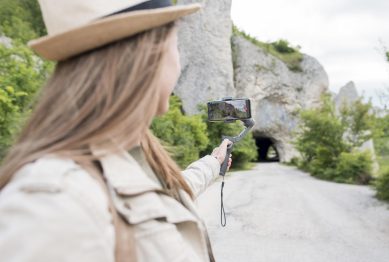In today’s fast-paced world, many travelers seek the thrill of visiting as many destinations as possible in a short amount of time. While this “checklist” style of travel might offer excitement and new sights, it often lacks the deeper connections and authentic experiences that many travelers crave. This is where slow travel comes into play, offering a more meaningful and immersive way to explore the world. By focusing on quality over quantity, slow travel allows travelers to engage more deeply with the cultures, people, and places they visit. But what makes slow travel so unique and beneficial, and why should you consider it for your next adventure?

What is Slow Travel?
At its core, slow travel is about savoring the journey rather than rushing from one tourist hotspot to the next. Unlike traditional travel, where time constraints push you to pack in as many destinations as possible, slow travel encourages you to take your time. This means spending several days or even weeks in a single location, allowing you to understand its history, customs, and way of life in ways that a quick visit never could.
Instead of ticking off landmarks, slow travelers immerse themselves in local experiences—whether that’s by learning the language, trying traditional cooking methods, participating in local festivals, or simply enjoying the natural surroundings. In short, it’s about connecting with the essence of a place, rather than just skimming the surface.
The Benefits of Slow Travel
1. Deeper Cultural Immersion
One of the biggest advantages of slow travel is the opportunity for deeper cultural immersion. Rather than simply visiting popular tourist sites, slow travelers have the time to interact with locals and learn about their daily lives. Whether it’s sitting down for a long meal with a local family or visiting small, off-the-beaten-path communities, slow travel fosters meaningful connections that are often absent in conventional tourism.
As pointed out by The New York Times, travelers who engage in slow travel tend to develop a more understanding of a destination’s culture and customs. By spending extended periods in one place, you gain a sense of the local rhythm, habits, and values, which is invaluable when trying to truly understand a new culture (New York Times, 2021).
2. Environmental Sustainability
Slow travel isn’t just good for personal enrichment—it’s also better for the planet. By staying longer in one location and traveling at a more leisurely pace, you reduce your overall carbon footprint. Frequent flights, long drives, and hurried tours all contribute to high levels of environmental degradation, but with slow travel, you can minimize these impacts.
Organizations like The International Ecotourism Society advocate for sustainable travel practices, including slow travel, as a way to help protect natural resources and reduce overtourism, which has become a serious problem in many popular destinations. By choosing slower modes of transportation, such as trains or bicycles, and staying in eco-friendly accommodations, slow travelers can ensure their adventures leave a minimal ecological footprint (International Ecotourism Society, 2020).
3. Personal Well-Being
In our hectic lives, it’s easy to feel stressed and overwhelmed by the demands of work and family. Slow travel, with its focus on relaxation and mindfulness, offers a refreshing break from the pressures of daily life. Whether you’re spending a week in a quaint village or exploring the rural countryside, the slower pace of travel allows you to unwind and truly be present in the moment.
Research shows that taking the time to disconnect from the daily grind and embrace a more deliberate pace can lead to significant improvements in mental health. A study published by Harvard Health found that spending time in nature and disconnecting from technology can reduce stress, lower blood pressure, and boost overall happiness (Harvard Health, 2020).
4. Supporting Local Economies
By spending more time in one place, slow travelers also contribute to local economies in a more meaningful way. Instead of merely visiting tourist traps, they support small businesses, local artisans, and community-based initiatives. This approach ensures that the spent by travelers directly benefits the people who live in these destinations, creating a more sustainable and equitable tourism model.
The World Tourism Organization emphasizes the importance of supporting local communities, highlighting that slow travel offers a more direct and lasting impact on the local economy compared to mass tourism. It helps to spread the economic benefits of tourism more evenly across communities and encourages the preservation of local traditions and craftsmanship (World Tourism Organization, 2021).
How to Experience Slow Travel
1. Choose Off-the-Beaten-Path Destinations
Slow travel is all about avoiding the crowded tourist hotspots. Instead, look for hidden gems that aren’t overrun with visitors. Small towns, rural villages, and lesser-known destinations often offer a more authentic travel experience. For example, instead of visiting crowded cities like Paris or Rome, consider exploring the charming villages of southern France or the picturesque coastal towns of Portugal.
2. Engage with Locals
To truly immerse yourself in the culture, take the time to talk to locals. Visit markets, take cooking classes, join local events, and strike up conversations with people you meet. By doing so, you not only gain insights into daily life but also form connections that will enrich your travel experience.
3. Travel Slowly
Instead of hopping from one location to another, consider spending longer periods in fewer places. Use slower forms of transportation, such as trains, buses, or even bicycles, to get from one destination to the next. This allows you to savor the journey and enjoy the landscapes and environments along the way.
4. Be Mindful of Your Impact
As you embrace slow travel, it’s important to remain conscious of your environmental impact. Opt for eco-friendly accommodations, reduce waste, and support local, sustainable businesses. Being mindful of your travel choices can make a big difference in ensuring that your adventures are as responsible as they are enriching.
Conclusion
Slow travel offers more than just a break from the typical whirlwind tours; it provides a chance to truly connect with the places you visit. Whether through deeper cultural immersion, reduced environmental impact, or improved mental well-being, the benefits of slow travel are vast. By embracing this approach, you can transform your travel experience into something more meaningful, memorable, and sustainable.
As the world shifts toward more responsible and immersive forms of travel, slow travel has emerged as a powerful tool for both travelers and local communities. So, why rush when you can take your time and experience the world in a more authentic way?
References
- New York Times. (2021). “Why Slow Travel Is The Best Way to Connect With a New Place.” The New York Times. Available at: https://www.nytimes.com (Accessed: 31 July 2025).
- International Ecotourism Society. (2020). “Sustainable Travel and Ecotourism.” International Ecotourism Society. Available at: https://www.ecotourism.org (Accessed: 31 July 2025).
- Harvard Health. (2020). “The Health Benefits of Being in Nature.” Harvard Health. Available at: https://www.health.harvard.edu (Accessed: 31 July 2025).









